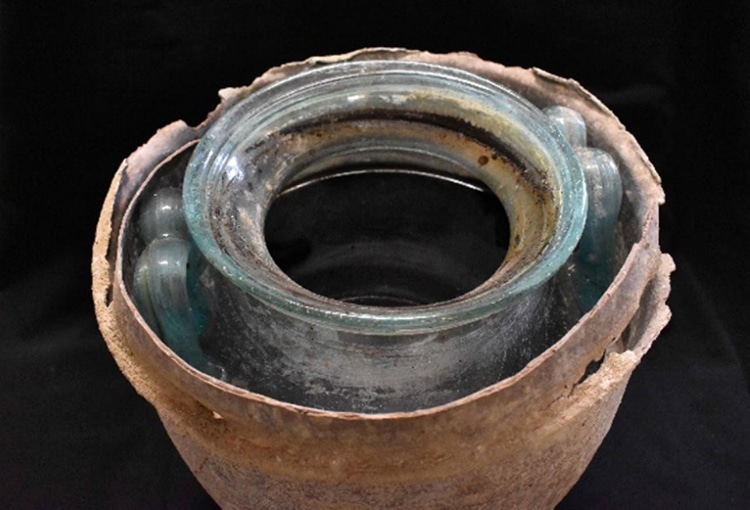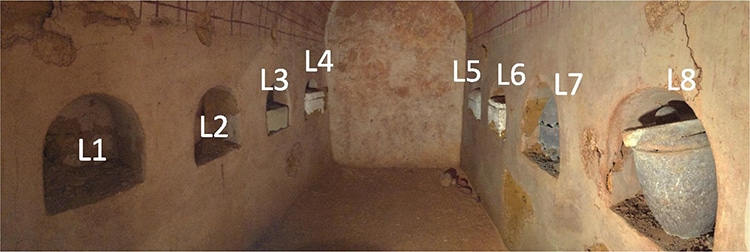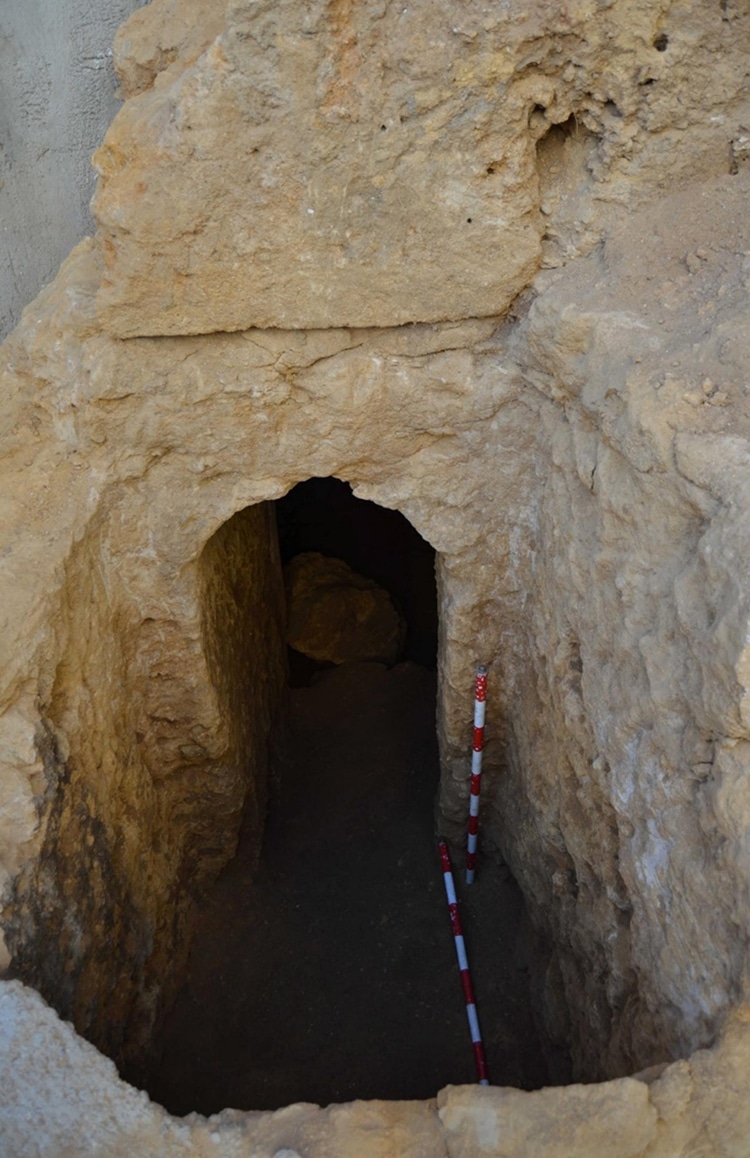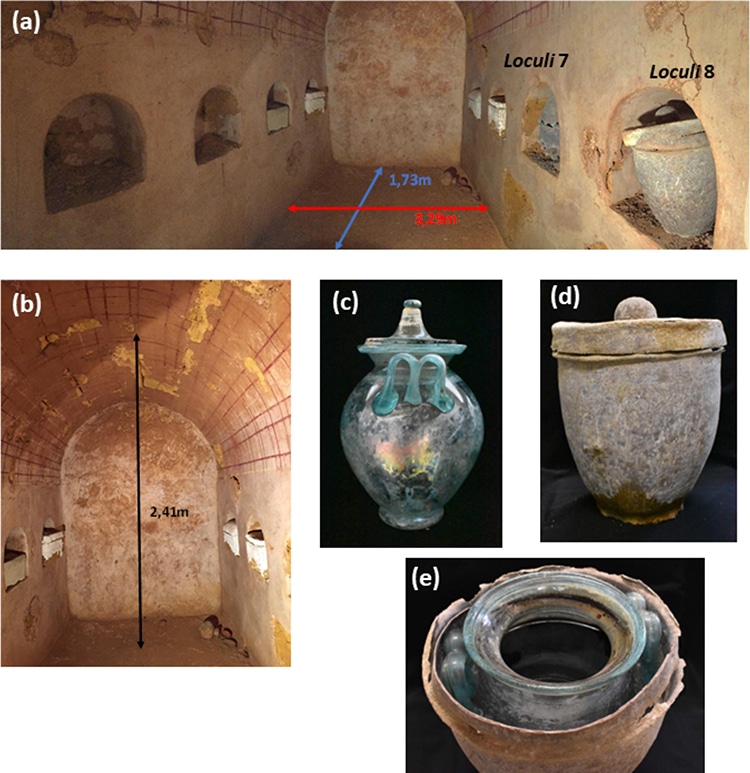
Reddish liquid contained in urn (Photo: Daniel Cosano et al., CC BY 4.0)
A family in southwestern Spain started some renovations on their house back in 2019. They quickly happened upon a tomb that was part of the ancient Roman city Carmo’s necropolis, or massive graveyard. This tomb had been covered up for millennia, and as a result remained undisturbed by looters. The artifacts that lay under modern-day Carmona date to the early first century CE and have included several astonishing finds. Recently, scientists published findings on an urn which contained almost five liters of reddish-brown liquid. Laboratory tests have confirmed it is wine that’s been hermetically sealed for 2,000 years. This is now the oldest known liquid wine ever found.
The wine wasn’t alone though. At the bottom of the urn were the cremated bones of a man and a gold ring adorned with Janus, the Roman god of transitions with two faces looking in opposite directions. The wine and the ring were both added to the funerary urn, likely to ease the deceased on their journey to the afterlife. As the scholars wrote in the Journal of Archaeological Science: Reports, “Given the religious significance of wine in the ancient Roman world, where it was highly symbolic and closely related to burial rituals, it is unsurprising to find vessels that might have originally contained wines among burial furnishings.”
While today the wine appears reddish, study authors and University of Cordoba chemists Daniel Cosano and Jose Rafael Ruiz Arrebola determined the wine to have originally been white wine. Using mass spectrometry and high-performance liquid chromatography, scientists determined the polyphenol and mineral salt composition of the wine. There was an absence of syringic acid, which would be present if the liquid had been red wine.
The current color is likely due to decomposition. And based on the polyphenols, study authors believe it would have been strikingly similar to modern-day Fino wines made in the region, which are a type of white sherry. While the wine has been lying in contact with cremains for two millenia, Cosano did brave having a sip of the ancient spirit. His colleague, Ruiz Arrebola, who himself declined partaking, told All That’s Interesting about Cosano’s observations, saying, “The flavor is salty, which is not surprising given its chemical composition, specifically its high concentration of potassium and sodium.”

Funeral chamber. (Photo: Daniel Cosano et al., CC BY 4.0)
The glass urn that contained the wine was found with five other funerary urns that each had its own loculi, or niche, in the tomb. This was likely a family tomb, with three urns holding female remains, and three male remains. Not much is known about the family, but the names Hispanae and Senicio were engraved on two separate urns. Along with the urns were more jewelry, ivory sheets believed to have been a box burnt on a funeral pyre, and plates that likely had food offerings. The excavation made headlines last year for the equally impressive find of a crystal bottle that held patchouli perfume, bringing us closer to understanding the sensorial experience of ancient Roman life.
Prior to the Carmona urn, the oldest liquid wine found is thought to be in a bottle excavated from Speyer, Germany, in 1867. This region was also part of the Roman empire in 325 CE which is the approximate vintage of the wine. However, this bottle has not been unsealed or tested as the Historical Museum of the Palatinate, which owns the bottle, is afraid of the effects of its exposure to air, and they don’t want to risk shattering the bottle.
There has also been wine residue found inside pottery from 8,000 years ago in modern-day Georgia. Preventing wine decay was still a code to be cracked in Roman times, and they relied upon additives, such as salt, for longevity. The fact that this tomb evaded looters and that archaeologists are certain the urns remained isolated from flooding or leakage has created what might be a singular opportunity to study 2,000-year-old wine still in its original form.
An ancient Roman tomb was discovered in the backyard of an Andalusian family’s home in Carmona, Spain.

Access to the tomb. (Photo: Daniel Cosano et al., CC BY 4.0)
Inside, archeologists found what is now the oldest-known liquid wine, and it dates back to the early first century CE.

Fig. 1. (a), (b) Funeral chamber. (c) Urn in niche 8. (d) Lead case containing the urn. (e) Reddish liquid contained in the urn. (Photo: Daniel Cosano et al., CC BY 4.0)
h/t: [Smithsonian Magazine]
Related Articles:
Archaeologists Have Determined What Ancient Roman Wine Tasted Like
5,000-Year-Old Unopened Wine Jars Found in Queen’s Tomb
Intricate Glass Cups Featuring Gladiators Were Souvenirs in Ancient Rome
Explore the Oldest Existing World Map, Carved in Clay 2,600 Years Ago
